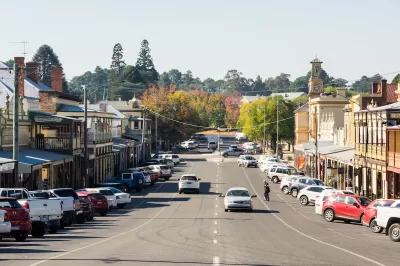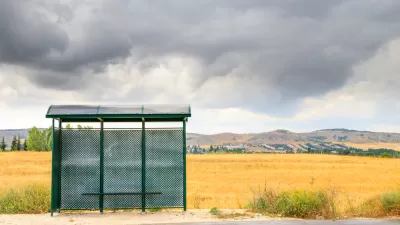On Transit Equity Day, reminding policymakers that rural communities need access to transit too.

In a piece for Transportation for America published on Transit Equity Day, Mehr Mukhtar calls for more resources for overlooked rural communities that often lack public transit options. Mukhtar notes that rural areas “perceived as areas that do not need access to transit due to the sprawling nature of the communities and assumed access to private vehicles.”
But that’s not true for many rural residents. “In reality, more than one million households in rural areas do not have access to a car. In fact, the majority of counties with zero-car households are in rural communities, highlighting the brazen need to invest in public transit.”
According to Mukhtar, “There are a lot of affordable, attainable solutions to encourage active and multimodal transportation in rural America. Implementing Complete Streets, more effective and multimodal-oriented land-use approaches, and strategic transit planning would all result in more mobility options for residents, as well as significant benefits, including healthier and more economically prosperous places.”
Rural areas can also be a primary beneficiary of on-demand microtransit, which can more flexibly serve areas with low populations and/or where fixed-route transit is impractical or too costly.
Ultimately, Mukhtar calls for more transit investment in overlooked rural communities. “By fostering equitable access to transportation options in rural communities, we can build more resilient areas where everyone can thrive.”
FULL STORY: Transit Equity Day highlights the need for transit in rural communities

Alabama: Trump Terminates Settlements for Black Communities Harmed By Raw Sewage
Trump deemed the landmark civil rights agreement “illegal DEI and environmental justice policy.”

Planetizen Federal Action Tracker
A weekly monitor of how Trump’s orders and actions are impacting planners and planning in America.

Why Should We Subsidize Public Transportation?
Many public transit agencies face financial stress due to rising costs, declining fare revenue, and declining subsidies. Transit advocates must provide a strong business case for increasing public transit funding.

Understanding Road Diets
An explainer from Momentum highlights the advantages of reducing vehicle lanes in favor of more bike, transit, and pedestrian infrastructure.

New California Law Regulates Warehouse Pollution
A new law tightens building and emissions regulations for large distribution warehouses to mitigate air pollution and traffic in surrounding communities.

Phoenix Announces Opening Date for Light Rail Extension
The South Central extension will connect South Phoenix to downtown and other major hubs starting on June 7.
Urban Design for Planners 1: Software Tools
This six-course series explores essential urban design concepts using open source software and equips planners with the tools they need to participate fully in the urban design process.
Planning for Universal Design
Learn the tools for implementing Universal Design in planning regulations.
Caltrans
Smith Gee Studio
Institute for Housing and Urban Development Studies (IHS)
City of Grandview
Harvard GSD Executive Education
Toledo-Lucas County Plan Commissions
Salt Lake City
NYU Wagner Graduate School of Public Service





























